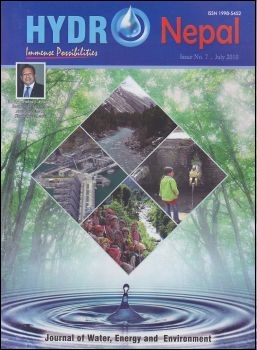Public Hearing in the EIA Process of Hydropower Development
DOI:
https://doi.org/10.3126/hn.v7i0.4242Keywords:
Public hearing, EIA (Environmental Impact Assessment), IEE (Initial Environmental Examination), EPA (Environmental Protection Act), EPR (Environmental Protection Rules), Hydropower development, NepalAbstract
This paper discusses the methodology for public hearings, mandatory legal provisions and their importance in the process of hydropower development. A public hearing is both a process of information sharing, discussion and negotiation, and an end result of allocating compensation and other impact mitigation activities. It is based on prin-ciples of equity and social justice. Any development project that brings changes to the existing biological, physical, socio-economic and cultural environment should be carefully examined considering the status of the stakeholders. A good public hearing process can strengthen private sector incentives to help government and the people to attain a nation’s hydropower development goals and, at the same time, address local opportunities and issues. A good public hearing is important for time-effectiveness, cost-effectiveness and sustainability of hydropower projects. Promises too early in the public hearing process tend to raise high expectations which, if misunderstood or unmet later on, may lead to negative consequences.There is an urgent need to standardize public hearings in the IEE and EIA processes of hydropower projects and help proponents to conduct public hearings effectively.
Key words: Public hearing; EIA (Environmental Impact Assessment); IEE (Initial Environmental Examination); EPA (Environmental Protection Act); EPR (Environmental Protection Rules); Hydropower development; Nepal
DOI: 10.3126/hn.v7i0.4242
Hydro Nepal
Journal of Water, Energy and Environment
Vol. 7, July, 2010
Page: 81-84
Uploaded date: 31 January, 2011
Downloads
Downloads
How to Cite
Issue
Section
License
The copyright of the articles and papers published is held by HYDRO Nepal Journal.
The views and interpretation in this journal are those of author(s), and HYDRO Nepal does not bear any responsibility for the views expressed by authors in the journal.




